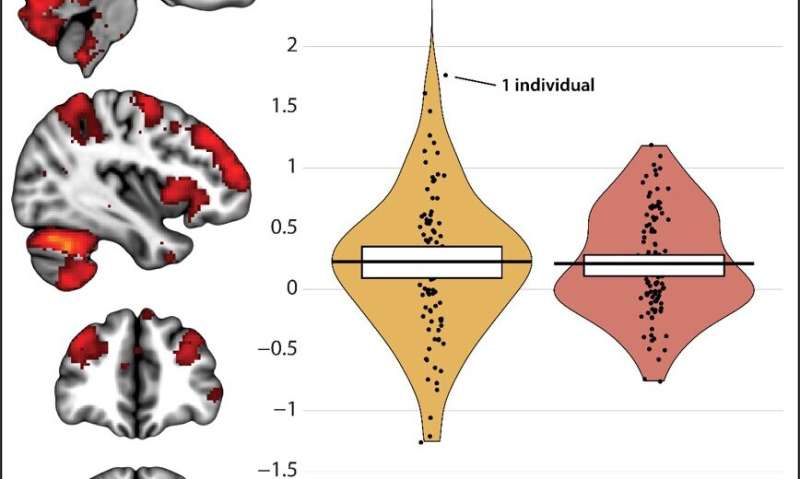The overlap between fear and anxiety brain circuits

Fear and anxiety reflect overlapping brain circuits, according to research recently published in JNeurosci. The findings highlight a need to reevaluate the existing models guiding anxiety research.
While "fear" and "anxiety" are often used interchangeably, prevailing scientific theory suggests that they are distinct, with different triggers and separate brain circuits. Fear—a fleeting reaction to certain danger—is thought to be controlled by the amygdala, whereas anxiety—a persistent, heightened state of distress in response to uncertain threat—is thought to be orchestrated by the bed nucleus of the stria terminalis (BNST). However, new evidence from Hur et al. suggests these two brain regions are equally sensitive to certain and uncertain threat.
The research team measured brain activity with fMRI while people anticipated receiving a painful shock paired with an unpleasant image and sound. Waiting for threat, whether predictable or not in its timing, recruited an overlapping network of brain regions including the BNST and the amygdala. Across a variety of tests, the two structures showed statistically indistinguishable responses, suggesting that states of fear and anxiety are assembled from a common set of core neural building blocks.
These observations raise important questions about the U.S. National Institute of Mental Health's model guiding research into the biology of emotional disorders.
More information: Anxiety and the Neurobiology of Temporally Uncertain Threat Anticipation, JNeurosci (2020). DOI: 10.1523/JNEUROSCI.0704-20.2020





















